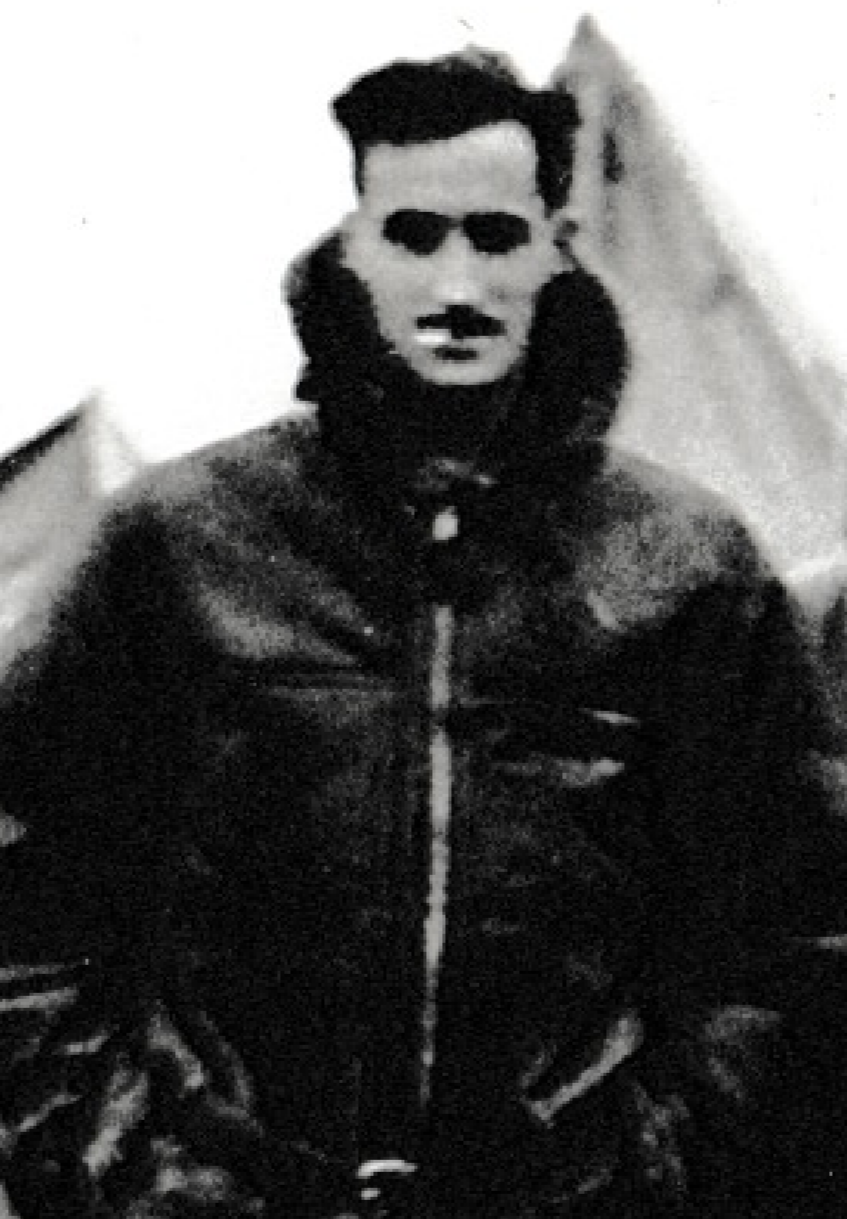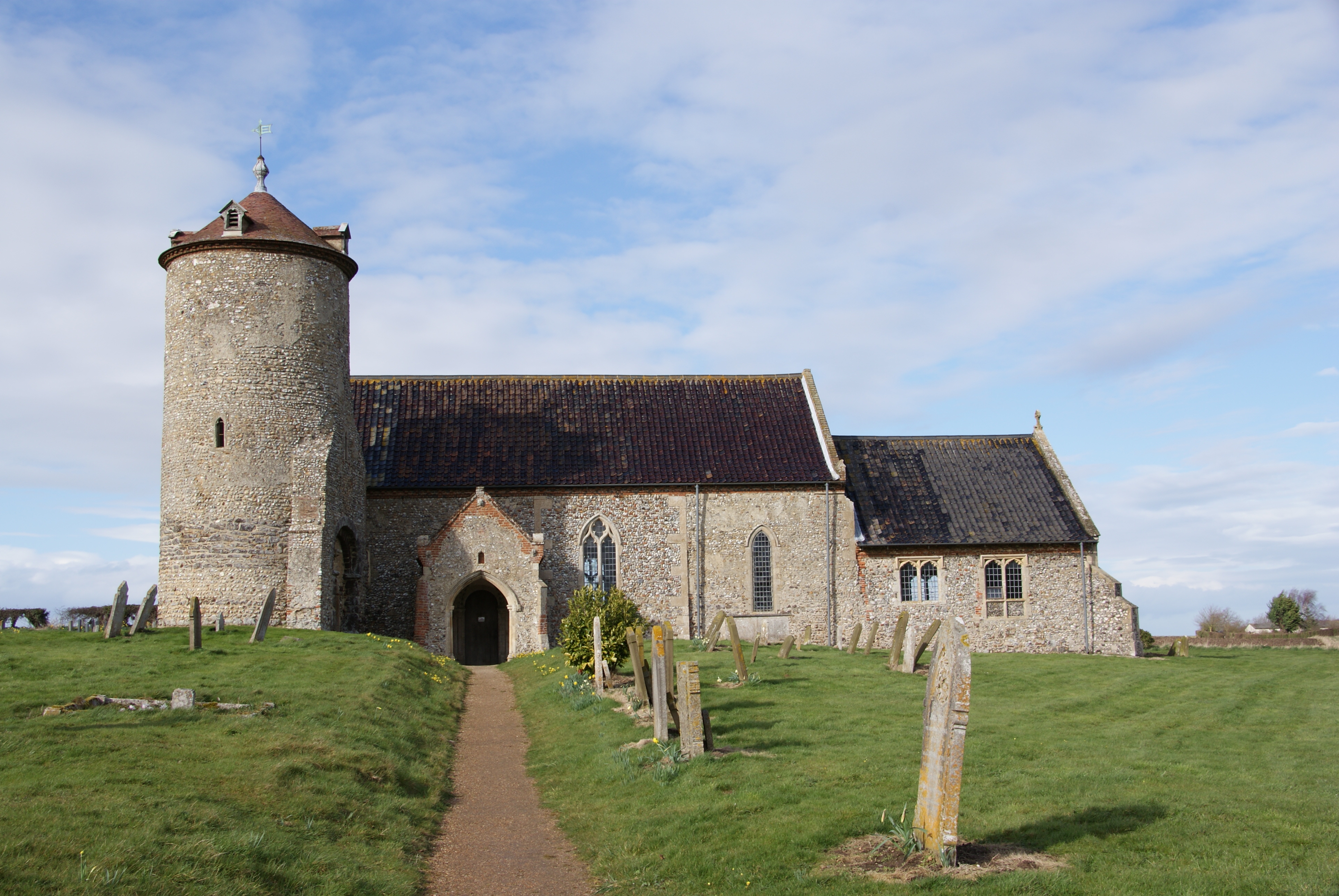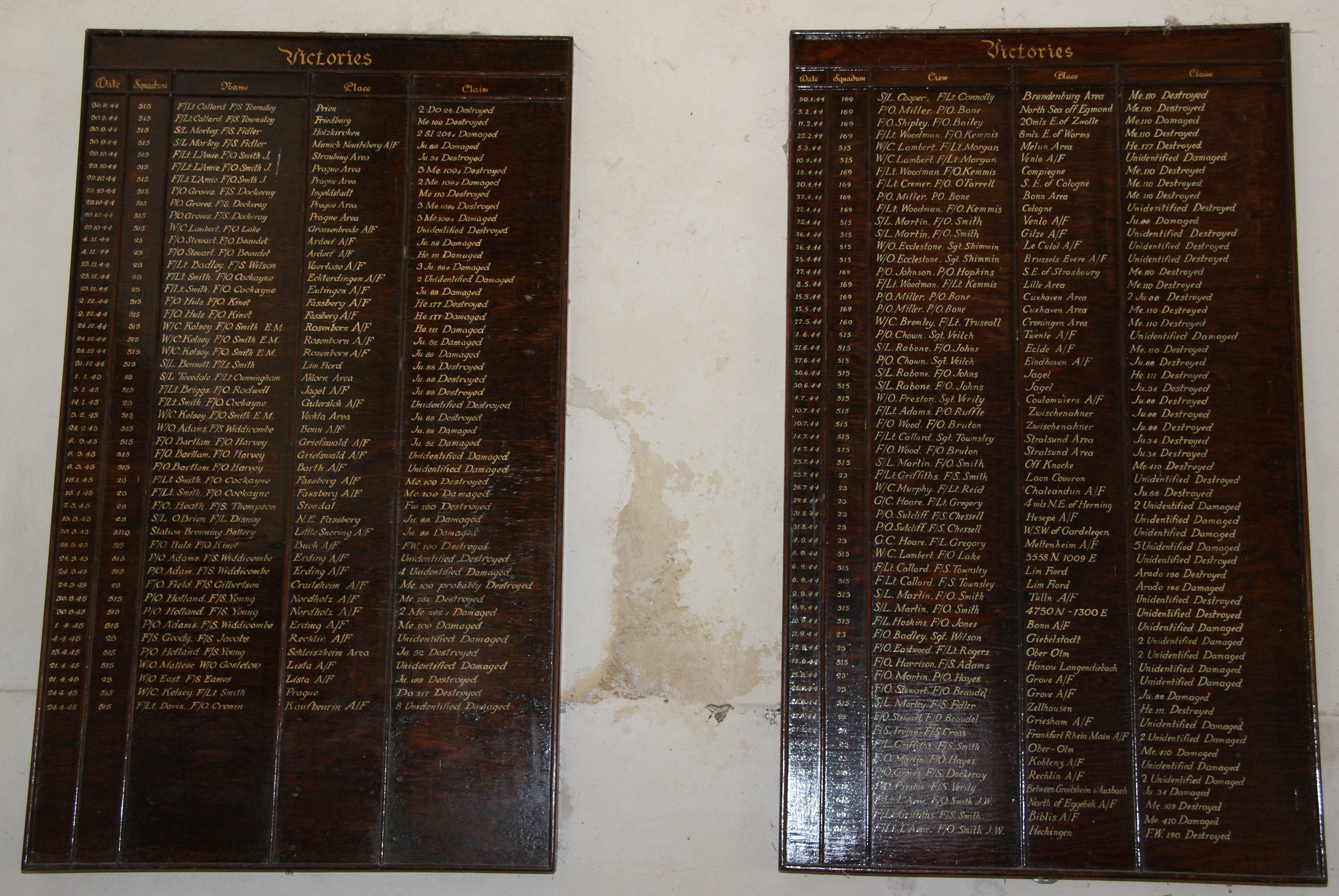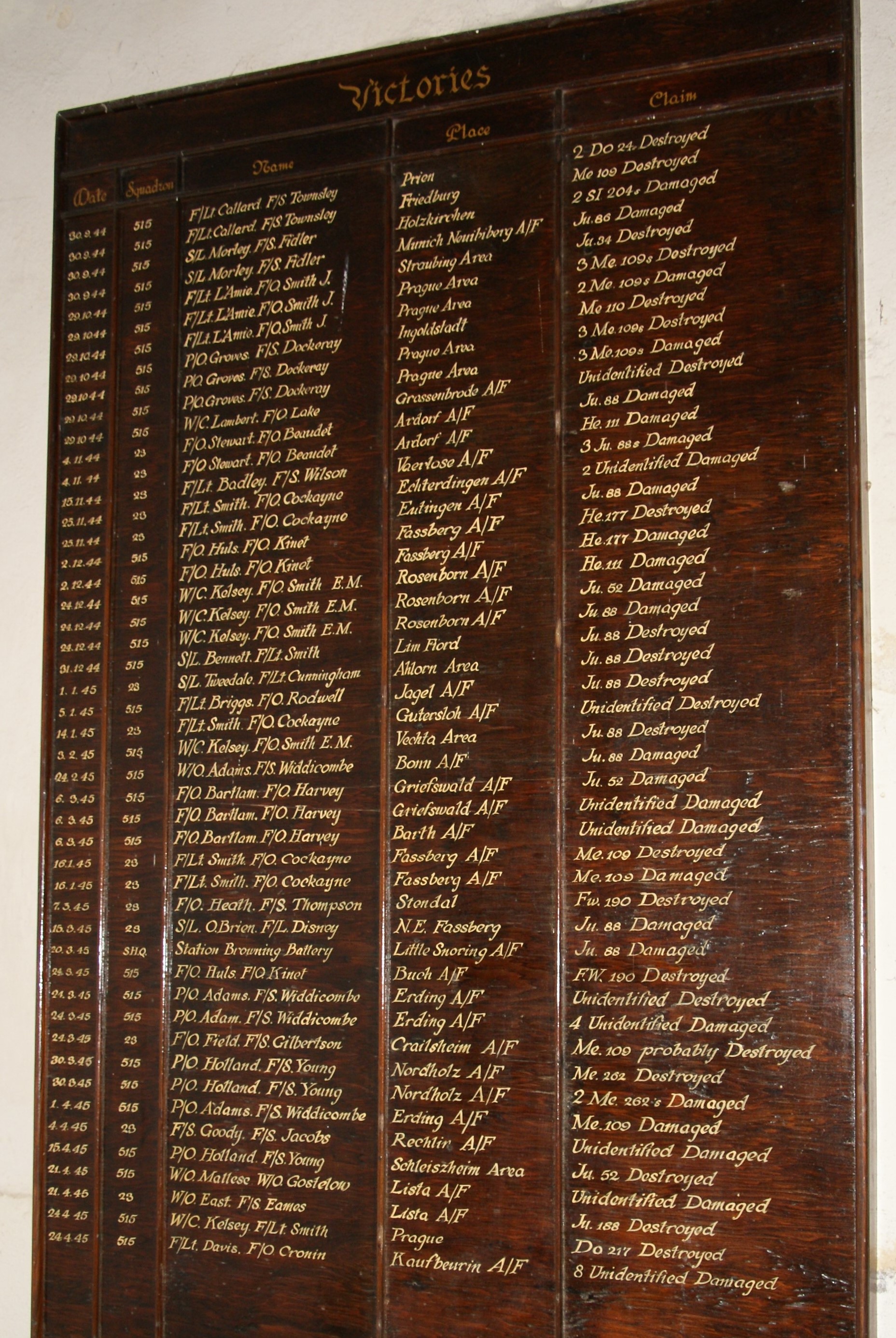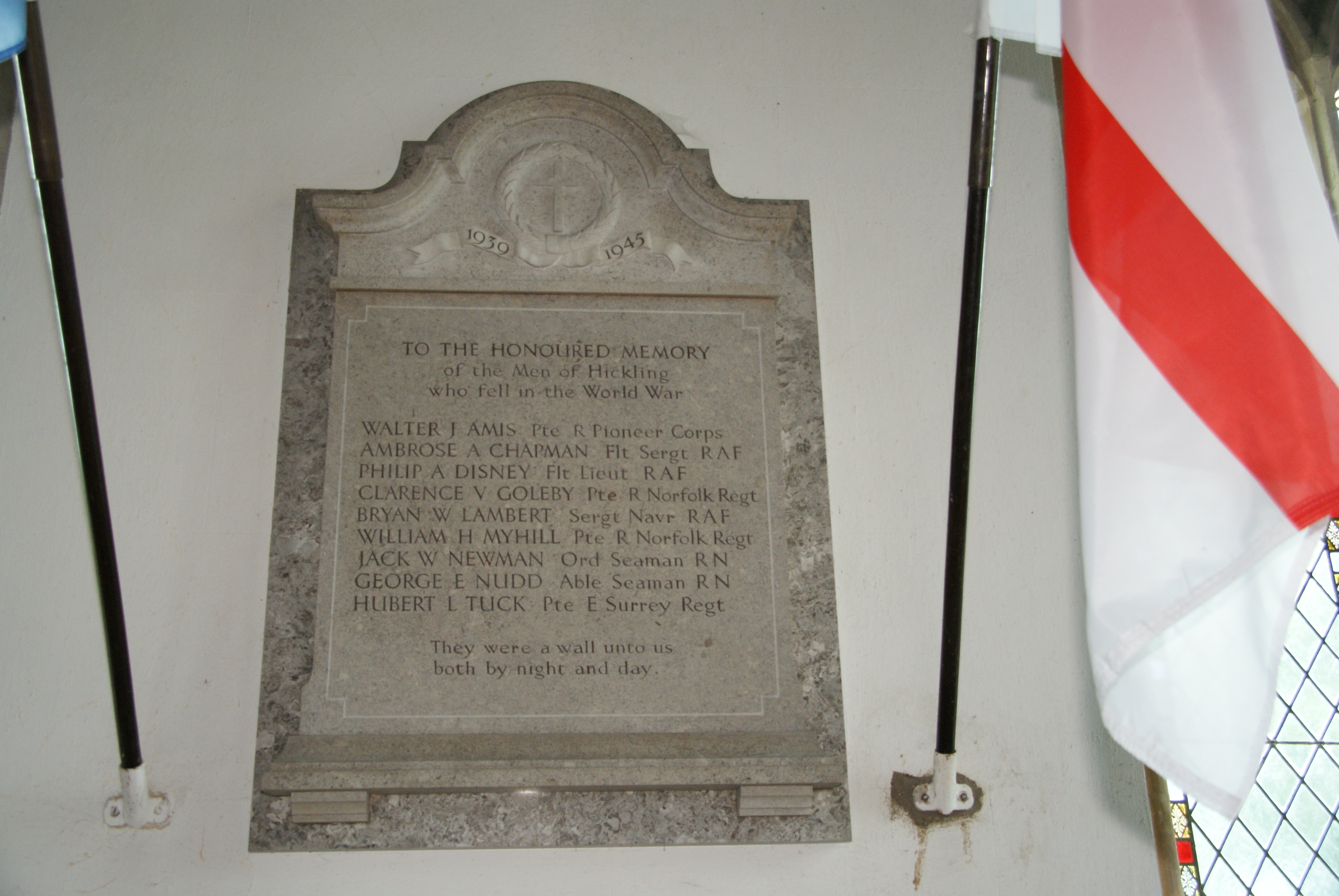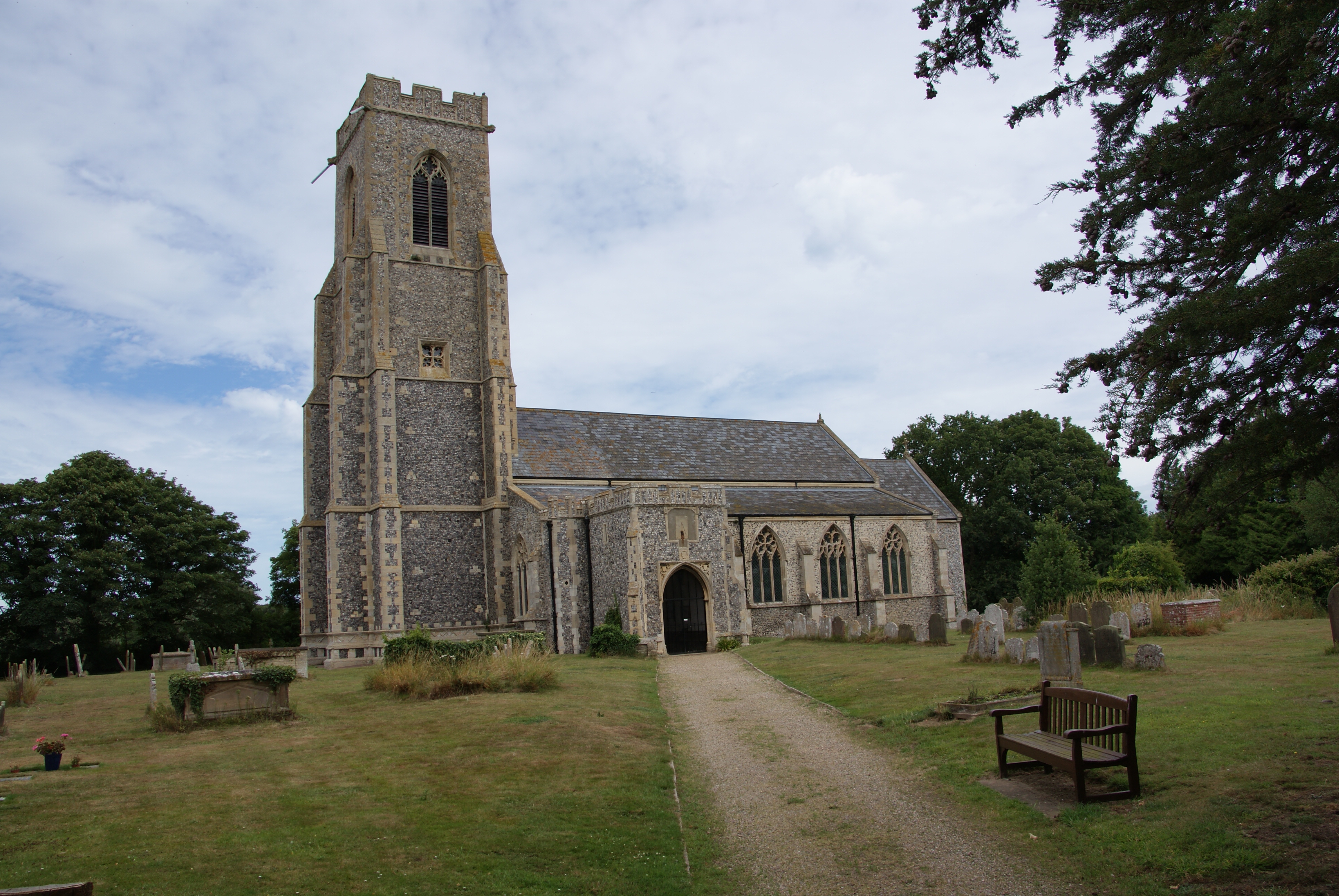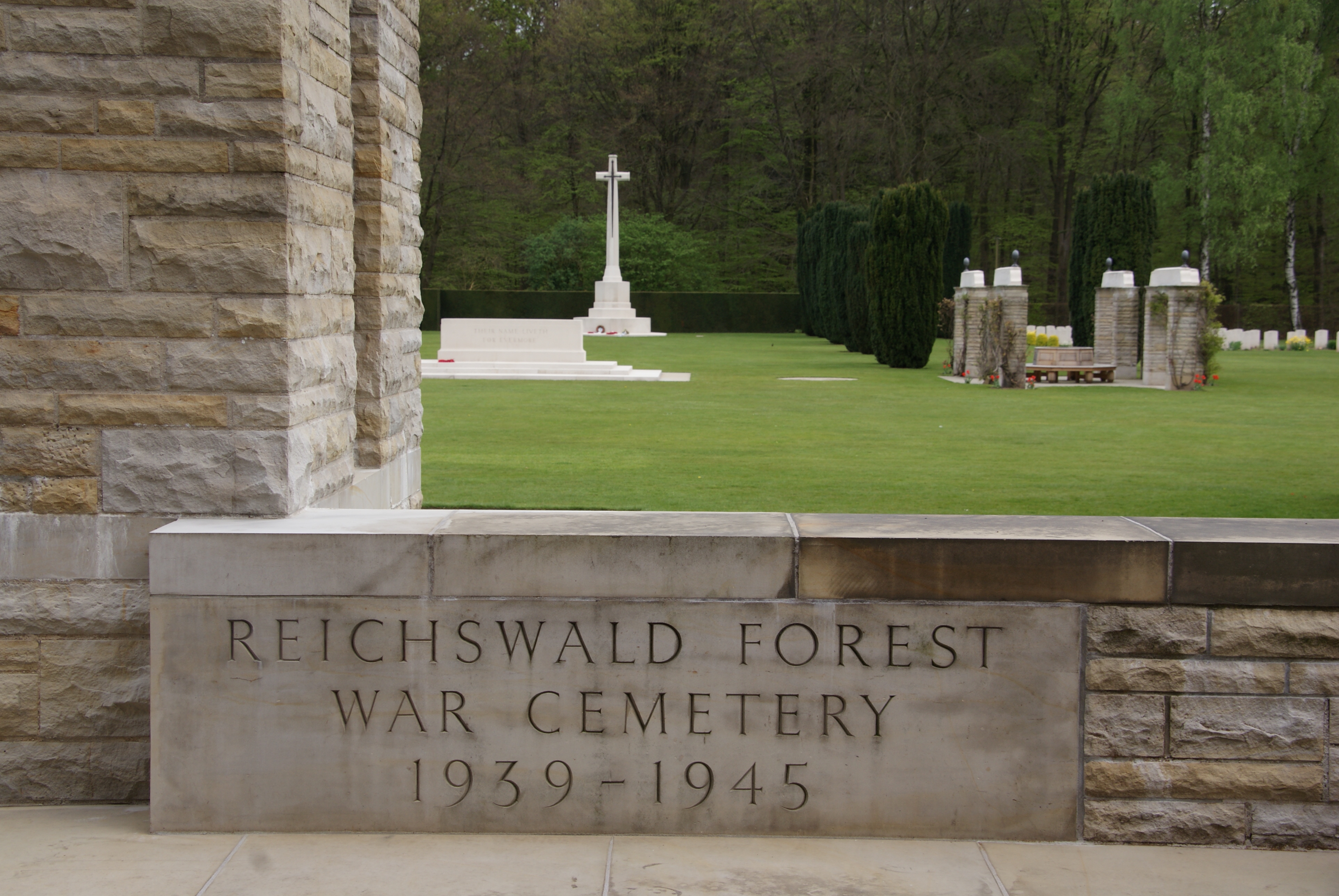Update to this story by Mark Gilby
Cherie Dawson, the author, wrote this footnote this week.
« Footnote 15th November 2023
After I wrote this story in 2007 I attempted to find Joyce Schofield or (at least) her family, in order to find out what became of her after she lost her fiancé in the war, but all attempts at that time were in vain.
After fifteen years, just a few weeks ago I came across a piece of information not known to me before. That was the address where Joyce was living at the time Uncle Ron was declared Missing In Action, and this important information rekindled my quest. I knew that it was highly unlikely that Joyce herself would be alive as she would now be 101, but still hoped to find out that she had hopefully enjoyed a long and happy life.
This time I did find the details of Joyce’s life after uncle Ron’s death, through and with the help of a kind Englishman I connected with via Ancestry.com (his father-in-law was a direct cousin to Joyce) and sadly it was not the happy ending I imagined for her. She lived at that same address (10 Smalley Street, Burnley) for the next seventeen years with her parents (a long time to mourn a loved one) but eventually married a widower, Frank Graves in April 1961 at the age of 38. They didn’t have any children, but he had a small child at the time of their marriage, whom Joyce would have cared for. Very sadly though, Joyce died just four years later at the age of 42 in July 1965 from cancer. Not the happy end I was hoping for, but a true love story nonetheless. »
I am that kind Englishman. I have only known of Ronald « Shorty » Dawson for just over 2 weeks, since Cherie only found me on 30th October. Corresponding with Ronald’s niece in Australia has brought this brave airman closer to my heart too. Tomorrow, I will visit the Runnymede Memorial and send a current photograph to Cherie. Next year, I intend to visit Copenhagen on 21st March in his memory.
Mark Gilby
THREE LETTERS
By Cherie Daniel
THREE LETTERS
(PDF version)
For my Grandparents George and Constance Dawson whom I adored
My Uncle Ron, one of my Father’s elder brothers, was a pilot and was shot down and killed in WWII. That was all I really knew of him growing up, apart from a photo on my Nanna’s mantle of a handsome man in Air Force uniform with pale gentle eyes, like those of my father’s, and a cheeky little smile.
He had died eight years before I was even born, but if ever the war was discussed and on Anzac Day especially, I would spare a little thought for him and say a silent thank you. I’ve always had a sense of pride, as a member of his family, and felt indebted to him as an Australian citizen, because he had given his life in the service of his Country.
Then, when I was in my mid twenties and by this time married and a mother, my Father received the first of two letters from an old war comrade of Uncle Ron’s who lived in Kent, England and had been trying to track down his family for quite some time, mainly to let them know how proud and honoured he was to have served with him and also to give a little insight into his life and escapades during the war. Sadly, my grandparents had both died by this time, but I remember Dad being really excited on receiving it and of listening with great interest as he read aloud.
10th August 1978
JAMES H. COLEY
Dear Mr Dawson
I have just received your name and address from Australia (Ron Layh of Manly), and for many years have been trying to trace the family of RONALD GEORGE DAWSON, known to us as ‘Shorty’. I understand you are his brother.
I do not know how interested you are, after all these years in what happened to Shorty in UK and Malta, Sicily, Italy, France and Denmark etc. His navigator, Fergie Murray was trained with me from 1941, and with John Irvin. John and I were both 6’4” tall and I enclose a photograph of us with Shorty taken in Sardinia in early 1944.
The only other thing to tell you in this first letter is that John and I went to Denmark in March last specially to pay tribute to the memory of Shorty and Fergie who were lost there in bombing the Gestapo HQ at Shellhouse on 21st March, 1945. A ceremony of the former prisoners now surviving is held each year.
We placed flowers at Shellhouse and then in the sea near where Shorty and Fergie went in after being hit by flak from a German ship. With ex-prisoners we stood in silent tribute to their memory. I made a speech at the lunch that followed, telling the Danes about Shorty and Ferg, and have always believed that Aussie and Kiwi families should know what happened to their boys who came here and did not return.
We have just had an old squadron reunion where a Kiwi who stayed here (after the war) was present. He has just finished flying jumbos. We both knew Shorty from the Spring of 1943 and wondered if you ever heard from the young girl in the WAAF who had smitten Shorty, which caused him to stay here instead of going to the Pacific War. He was a test pilot at the Operational Training Unit where we became instructors for a time after coming back from Sardinia and used to be so shy about her as he thought we would tease him after all his talk about breeders’ permits (marriage certificates) etc.
Fergie, his navigator, was 38 when he was killed, but with his prayers and Shorty’s oaths they made a great crew and were a legend for skill and courage amongst those who knew best – us, their mates. Fergie’s widow is still alive.
We gave the Danes photographs of them both and told them what great chaps they were. The Danes hold them in great respect and were most kind and hospitable to us.
Archie Smith of Beaumaris, Victoria was the leader of the VIC formation in which Shorty and Ferg were flying at the time they were lost and Bob Ireland the leader of the 464 Squadron. He now lives in Mount Eliza, Victoria. Mick Martin, a recently retired Air Marshal, who was one of the leading Dambusters wrote to me about Shorty a few years ago.
Shorty had a happy life with us, and did some horse riding and swimming in the Mediterranean – including a freezing nude sortie with me for a bet when a crowd of us were having a stroll along the beach in mid winter.
Please let me hear from you. I have other photographs and stories of Shorty.
Yours sincerely
James H. Coley
The photograph that was enclosed showed this tiny man, (Uncle Ron) all of about 5’4”, flanked on both sides by two absolute towers of men, and apart from being quizzical, it just brought home to me the fact that courage comes in all sizes. From that first letter I gleaned so much. I found out with whom and where he served, how he lived and even, sadly, where he met his end. It was heart-warming as well to know that the Danish people still remember and honour those who fought and died on their behalf. The fact that he was killed only a few short months before the end of the war in Europe (June 1945) did not escape me either. Incredibly, I also learnt about his love for an English WAAF, and from what his friend said, perhaps his first and only love. I remember feeling a pang of pity then for that young girl who would have been just as heartbroken as his family all those years ago when he did not come home and wishing that I knew her name. Dad vowed to enquire further about her when he replied.
A picture of Uncle Ron was now starting to form in my mind of a true Australian larrikin, a short nuggety guy with no fear, who embraced life and also loved to tease his Pommy mates unmercifully, in the true Australian tradition that remains til today. My father wrote back to James Coley and within a few months received a second letter.
JAMES H. COLEY
29th November 1978
Dear John
(it would seem strange calling you Mr Dawson after your brother was so close to us)
I apologise for the delay in replying to yours of the 4th October, but I have been trying to gather together photographs and other information to put in one bundle to you, and have not yet finished, so must at least acknowledge your letter in this way.
I did not know, or at least remember, much about Ron’s family and it is interesting to hear of the survivors and that your brother Bob received one of the letters I sent to your father at the last address given to me by RAAF. Recently I heard that Ove Hermansen, the Dane who is researching everything about the Gestapo HQ raids (four of them) by mosquitoes, had heard from you or one of your brothers. He lectures on the raids to young Danes at university etc. He was most hospitable to John Irvin and myself at his home in March last, as were the surviving prisoners, liberated when the raid took place at Copenhagen.
John Irvin and Bill Shattock (my pilot in Malta and elsewhere), who both share such happy memories of Ron and Fergie Murray, have just spent the weekend here with us, and their wives. I showed them your letter and they send their good wishes to you all.
I cannot remember Ron’s girlfriend’s name, but she was a sweet little English sheila of the WAAF and he was a bit bashful about being so obviously in love, after all his tough Aussie talk (most of us were married) about breeders’ permits and such. He thought we would tease him back, but it was obviously too serious for that. He had finished his tour of duty and could have come home for the Pacific War, but I’m sure it was the girl and his warm regard for his navigator, Fergie Murray, that made him stay on and go to 464 squadron of the RAAF with Bob Ireland as C.O.
We first met him at 13 OTU at Twinwood Farm near Bedford, where we learned intruder work on Blenheims. This was a specialist sort of night destroyer operations on German night flying bases, and after our training we all went to Malta on 23 Squadron, where Ron loved the sun and sea, and as you may remember he could swim like a fish. We were hard up for grub though and Fergie lost about two stone, while I was 6’4” and weighed less than 140lbs.
Ron and Fergie used to quarrel to hide how much they respected each other, and on one trip were posted missing, but turned up after a great feat of navigation and piloting through moonlit mountain passes, after losing an engine strafing near Foggia in Italy. Ron made a miraculous landing at Palermo in northern Sicily on a short airstrip by the light of headlamps from a jeep. Our NZ flight commander went there in daylight in a Spitfire to see them and could not get down the first time. Next time out Ron shot down a Dornier 217. We could never understand why he was not decorated, but he was no respecter of persons in authority, and thought everybody ‘Pommies’ except we, his mates. I flew with him off the Bay of Naples and both engines cut out and we dropped towards the sea, but at the last moment he got them going and we did not have a watery grave that day.
More when I get a chance, but MERRY CHRISTMAS to you all.
Yours sincerely
Jim Coley
It was obvious from this second letter that Uncle Ron was revered by his compatriots for his bravery and piloting skills and loved by his friends for his uniquely “Aussie” personality. Unfortunately though, Mr Coley couldn’t remember the name of the young girl who had stolen Uncle Ron’s heart and this was the last correspondence my father received from him.
The two letters were eventually confined to an old brown leather pouch that had lived at the bottom of my father’s wardrobe beside his workbag, for as long as I could remember, where he kept any papers or correspondence of importance to him. They stayed tucked safely away there for another thirteen years until my dear father passed away.
On rediscovering them I was once again inspired and showed them eagerly to my two now grown up daughters, my friends and my three younger brothers, the youngest of whom didn’t know of their existence. I recall him being especially proud and touched by Uncle Ron’s brave deeds, as he is also in the Armed Forces and empathised with him most deeply.
Another sixteen years have passed since then, don’t ask me where they have gone, but earlier this year on a recent but rare visit to my Aunty Joan’s (she lives over 600kms away), I decided to take her copies of the letters as I wasn’t sure if she had seen them or not. While we have always lived a long way apart, Aunty Joan and I have remained close and she is now the only surviving member of my father’s once large family. She was most thankful and happy to have them, as she didn’t remember seeing them before, but she had something even more wonderful to show me. A few months earlier when she was going through some old papers she found Uncle Ron’s last letter home to his mother.
18th December 1944
Dear Mother
It’s quite some time since I’ve written to you and quite a lot of things have happened in the meantime. I won’t try to explain why I haven’t written but I should be able to give you some idea of my past activities.
Well I am back on my second tour of operational duties. Before I started this tour, which was about a month ago, I was given the preference of a ticket to Australia or another tour of Ops, well I chose the latter for reason that you will see later. Since you last heard from me, as you will see from my address, I have been made up to Flying Officer. Ferg my navigator has also been made up to the same rank. He is the same navigator as I had on my last tour.
I have been receiving your parcels regularly, the last one arrived about a week ago. I also received Joan’s Christmas cable about the same time. Please convey my thanks to the Bangalow Welfare.
Well Mother I suppose you have been wondering why I turned down the offer of a ticket back to Australia, it took quite a lot of deciding and at the time I thought, whichever I decided I would probably be sorry, especially being away from home so long. Anyway I should know my own mind. The fact of the matter is, which will probably come as a shock to you, I became engaged about two months ago. Now that you have heard the worst I had better tell you a little about her. Well her name is Joyce Schofield and she comes from Burnley, Lancashire. Joyce has just turned twenty-two and is a member of the WAAF. I first met her about seven months ago at the same camp as I was stationed during my rest period. I have been to her home several times on leave and met her people. They are quite a nice family and just ordinary people and I’m sure you’d like them. I’m sure if you knew Joyce too you would immediately be with me in saying that I have done the right thing. I wont go into details to tell you how much I think of her, I’ll just leave that to you own imagination.
There is nothing much more of any importance happening as far as I am concerned, since you last heard from me so I’ll end up here, but remember the longer I stay here the better off I am. At least I can save more money because I don’t pay any income tax and believe me I’ll need it. Well Mother cherrio for the present and I hope everything is OK at home.
Lots of love Ron
Finally the mystery girl had a name, ‘Joyce Schofield’, and she was not just his girl, but his fiancé. From the date on the letter and the age she was at the time, I calculated that she would be eighty-five years old now, if still living. If so, I know she would remember Uncle Ron and I would love her to be able to read the three letters. Finding out her name is what actually compelled me to put pen to paper.
As you see, this story has been a long time in the telling. It actually started just over ninety years ago on 18th September 1917 when Uncle Ron was born in Bellingen, a small country town in NSW. One of nine children (seven boys and two girls), he grew up in hard times and was only twelve at the onset of the great depression. I called upon Aunty Joan to fill in some personal details of his early years and these are some of her childhood memories of him. They are, as she says, nothing but fond although scrambled and dim, as she was only twelve when he went off to war. He worked on a farm and his best mate and a couple of his brothers rode motorbikes around town, they had their own little ‘gang’ going. He was kind and generous with his time and where the others wouldn’t, Ron would always give Joan a ride on the back of his bike whenever she wanted. His best mate already had his pilot’s licence and I’m guessing that’s how Ron discovered his own love of flying. Jobs were scarce in the country so in his late teens he went to Sydney with two of his brothers, looking for work. They lived in a boarding house at Drummoyne and Ron got a job at the Nestles Chocolate Factory, where most of his wages went to pay for flying lessons. (That explained to me why one of the documents I found during my research listed his occupation at the time of enlistment as ‘confectioner’. I thought it a strange job for him to have, or perhaps a misprint. From my knowledge of him, which was almost entirely through those first two letters, he didn’t seem suited to that kind of work). On occasion, while working there he would send chocolates home to his Mother, who had great trouble hiding them from her large brood and rarely got to keep any for herself. Joan remembers fondly too, receiving the largest Easter egg she had ever seen from him one year. I’m sure she would have shared it with all her family though, as like her brother Ron before her, generosity runs strongly through her veins. He signed up at the outbreak of the war and with a number of other Australian flyers, was sent to England to fly with RAF squadrons.
A debt of gratitude is owed to James Coley, wherever he may be, for making the effort to find Ron’s family and provide us with a real and powerful image of his last few years. Perhaps the writing of this story will repay it in some small way.
The picture of Uncle Ron is complete now in my mind and I want to share it with others, so that they too may have an insight into the spirit of an “ordinary Australian” but yet an extraordinary man. There are, of course, thousands of stories like this one to be told, of brave Australians who went off to war to fight for their country, families and way of life and never made it back home, this is just one.
Another special bond exists between my uncle and myself, in that the short gene he inherited, was passed down but skipped my Father, missed my three brothers (two of them are over 6ft) and landed squarely on me. Both my daughters are taller as well and the younger one delights in being able to rest her chin on top of my head, but I don’t mind when they tease me and call me shorty; it makes me very proud to bear the same name. Here’s to you Shorty Dawson.

Uncle Ron on 23 Sqd Malta
(third from left sitting)
Written 23rd October 2007
Published online 11 November 2023
Note
Paul Rapson has identified his Grandfather in a comment. See the comment section below.



